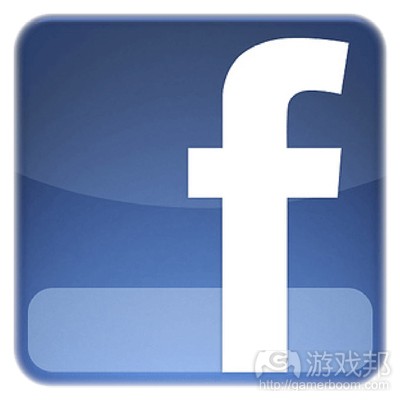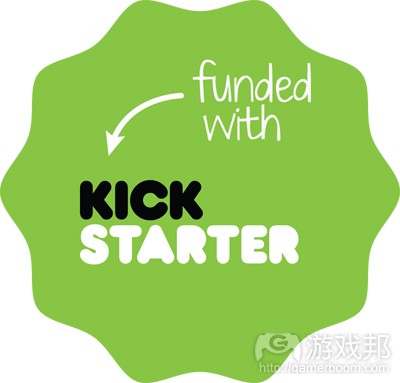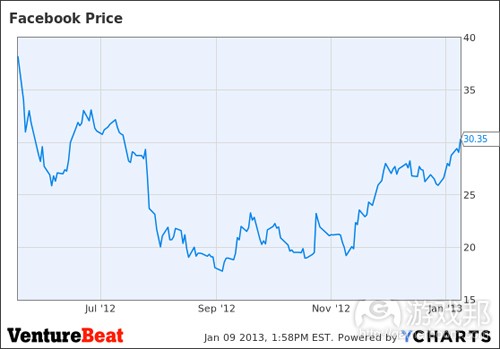每日观察:关注Facebook变更用户数量报告形式(1.10)
1)Facebook日前宣布更改其应用和游戏用户数量报告方式,为开发者提供一个排名和用户分级设置,而不仅仅是反馈月活跃用户(MAU)和日活跃用户(DAU)数量;这一设置将于1月16日开始生效。
Facebook将MAU划分成0,5,10,50,100,500,直至1000万的等级,DAU的划分与之类似,但其上限仅为100万。这意味着一款MAU达到1100万的应用,以及一款MAU达4500万的应用将同样跻身1000万MAU的行列,只是其排名前后有所不同。
这种设置虽然让开发者获取的数据缺乏一定的透明度,但更为接近苹果、亚马逊和谷歌呈现应用排名的方式。苹果和亚马逊应用商店是以产品类型进行排名,并不会呈现下载量或使用率等数据,Google Play是以1000-5000,5000-10000,10000-50000等下载量层次划分应用。但其划分的下载量层次上限高达5亿。
自Instagram活跃用户下跌以来,Facebook已不再报告该应用用户数量,并且已在2012年1月1日停止分享旗下的Messenger等手机应用的MAU和DAU。
观察者认为,这个新的分层汇报系统不仅有利于Facebook应用保密自身具体流量,还为第三方开发者创造了一个更为友好的环境,使其产品用户数量不会被新闻媒体、投资者和竞争者所得知,他人就无法再根据这些数据判断一款应用的发展情况并克隆相关产品。但此举也不利于开发者与他人对比自己产品的竞争力,投资者和并购团队也无从判断相关应用的发展潜力。
2)据venturebeat报道,大众融资平台Kickstarter最近发布数据显示,2012年有224万用户至少参与赞助了一个项目,其总捐赠数额达3.19亿美元,相当于2012年平均每分钟捐赠600美元;共有1万8109个项目成功融资。该平台2012年融资额度最高的项目类型如下:
1.游戏:8310万美元
2.电视&视频:5790万美元
3.设计:5010万美元
4.音乐:3500万美元
5.科技:2900万美元
6.发行:1530万美元
7.美食:1110万美元
8.艺术:1050万美元
9.漫画:920万美元
10.戏剧:710万美元
11.时尚:630万美元
值得注意的是,虽然音乐领域推出的融资项目最多,有5067个项目成功融资,但游戏才是融资额最高的类型,有17个项目融资额超过100万美元。
将近60万人参与资助至少两个项目,还有5万47人资助至少10个项目,452人资助了至少100个项目。
3)据venturebeat报道,Facebook股票在1月9日收盘时终于突破每股30美元大关,达到30.59美元。该公司去年5月进行IPO时每股售价38美元,但在7月份之后就再没有达到30美元。
4)据Techcrunch报道,职业社交网络LinkedIn日前宣布其全球注册用户已达2亿,平均每隔2秒新增一名用户(每天新增17万2800名用户)。
该平台2009年1月份注册用户为3200万,2011年3月时注册用户达1亿,2012年11月1日时宣布新增1300万用户。
LinkedIn注册用户遍布全球200多个国家和地区,美国仍是最大市场(7400万用户),其次是印度(1800万用户),第三为英国(1100万)和巴西(1100万),第四为加拿大(700万)。
该网站注册用户发展最快的国家分别是土耳其、哥伦比亚和印度尼西亚,其移动网站使用率发展最快的则是中国、巴西、葡萄牙、印度和意大利。
LinkedIn注册会员分布最广的行业是IT&服务(400万),其次是金融服务(203万),高等教育(195万),计算机软件(165万),以及电信(159万)。(本文为游戏邦/gamerboom.com编译,拒绝任何不保留版权的转载,如需转载请联系:游戏邦)
1)Facebook to report public app usage in tiers instead of specific numbers
Brittany Darwell
Facebook today announced changes to the way it reports user counts for apps and games that integrate with its platform, providing a ranking and a user tier rather than monthly active and daily active users rounded to the nearest ten-thousand, as it did previously.
Monthly active user tiers are 0, 5, 10, 50, 100, 500, up to 10 million. Daily active user tiers are the same but stop at 1 million. These caps mean that an app with 11 million MAU and an app with 45 million MAU will both be reported in the 10 million tier, with only their ranking number to distinguish between them.
Facebook reports these figures in its App Center, within search results and via its API. The insights developers receive about their own apps will not change. This just affects what information is publicly available to other developers and non-developers. The change goes into effect on Jan. 16.
Although Facebook is taking away some transparency, this puts it more at par with how Apple, Amazon and Google display app rankings. Apple and Amazon’s app stores rank apps by category but do not share any download or usage numbers. Google Play ranks apps and offers a range for installs: 1,000-5,000; 5,000-10,000; 10,000-50,000; and so on. However, Google Play seems to go up to 500 million installs, rather than capping its tiers at a lower number to obfuscate the data.
Facebook seems to be making the change to prevent day-to-day scrutiny of app usage, especially for top developers. With the company now publicly traded, small changes can have a big impact.
MAU and DAU numbers for apps often varied as the social network tweaked its algorithms, experienced bugs or faced seasonal trends, but the media often misinterpreted this data or blew it out of proportion. Most recently, the New York Post saw a dip in Instagram’s Facebook-connected DAU over the Christmas holiday and wrote a report about user “rage” and “revolt” following a proposed terms of service change. Facebook shares opened down 2.9 percent that morning.
Facebook has now stopped reporting any active user counts for Instagram since it falls under its family of applications. The company stopped sharing MAU and DAU for its other mobile apps like Messenger on Jan. 1, 2012, but it neglected to do this for Instagram until this week.
The new tiered reporting system doesn’t just protect Facebook’s apps. The change arguably creates a more hospitable environment for third-party developers, whose user numbers are no longer under a microscope from the press, investors and the competition. Developers can control the milestones they share and test things without worrying how user fluctuations will be perceived. It also means there is less opportunity for a developer to spot a rising app and clone it. However, the changes make it more difficult for developers to judge their apps’ performance compared to the competition and harder for investors and M&A teams to spot trends.(source:insidesocialgames)
2)Kickstarter’s best of 2012: 2.2M backers, $319M raised, 18K projects funded
John Koetsier
Kickstarter released its “best of” list for 2012, and the numbers are impressive: 2.24 million people funded at least one project and pledged a total of $319 million. That’s more than $600 per minute over the course of the year, with 18,109 projects successfully funded.
The crowdsourced funding platform remained true to its artistic roots. Despite many well-known gadget Kickstarter campaigns like the Ouya gaming console, which raised $8.6 million, the biggest categories included games at $83 million raised, followed by film and video, design, then music, with technology coming in fifth place with $29 million.
1.Games: $83.1 million
2.Film & video: $57.9 million
3.Design: $50.1 million
4.Music: $35 million
5.Technology: $29 million
6.Publishing: $15.3 million
7.Food: $11.1 million
8.Art: $10.5 million
9.Comics: $9.2 million
10.Theater: $7.1 million
11.Fashion: $6.3 million
Almost 600,000 people backed two or more projects, with 50,047 backing 1o or more, and a very dedicated 452 people backing an incredible 100 or more projects: essentially one every three days.
The category with the most funded projects was music, with 5,067 projects funded, but games took in the most cash: $83 million. An astonishing 17 projects took in over $1 million each.(source:venturebeat)
3)Facebook stock hits $30, a 5-month high, after announcing media event (updated)
Meghan Kelly
Updated at 7:43pm: Facebook closed the day at $30.59.
Facebook’s stock price finally surpassed the $30 a share mark, after a tumultuous ride since its May IPO when it closed at $38. The company hasn’t hit the thirties since July.
The news is exciting for investors who watched Facebook’s stock plummet in the months following its highly-anticipated initial public offering. Facebook’s IPO was botched for a number of reasons, beginning with a technology glitch in the Nasdaq’s servers that delayed trading by nearly a half hour. Scandal further erupted after Citigroup fired a top analyst and was fined $2 million for leaking information about Facebook’s risks and other confidential research during the social networks’ quiet period. The stock continued to drop after big-name investors let go of shares.
Facebook declined to comment on the stock price when VentureBeat reached out.
The high today may be attributable to an invitation Facebook sent out to media yesterday afternoon. The event invitation says, “Come and see what we’re building,” and will be held on Tuesday, January 15 at the company’s Menlo Park headquarters. The industry is now stirring about what Facebook could be up to, as there have been no recent leaks or build-up that could nod to a specific product.
The company has recently been keen on showing its users and investors that it’s still an innovator. In order to compete with SnapChat, an app that lets you send photos and videos that will self-destruct in 10 seconds after viewing, Facebook quickly hacked together “Poke,” to prove it can still innovate on the fly.
VentureBeat will be reporting live from Facebook’s event. Check back for details on what the company releases.(source:venturebeat)
4)LinkedIn Hits 200 Million Registered Users Worldwide — Adding New Users At Rate Of Two Per Second
Natasha Lomas
LinkedIn has announced it has reached 200 million user registrations worldwide — with new users being added at an average rate of two per second (or 172,800 per day). Not bad for a professional social network (but obviously still a far cry from Facebook’s one billion+ active users).
LinkedIn clocked up its first 100 million members back in March 2011, underlining how its growth rate has accelerated in recent times – with the network adding more than 13 million members since its last announcement on November 1, 2012. Back in January 2009 membership stood at 32 million. However, this is total users, not monthly active users or another indicator of active engagement, as others have pointed out. The company doesn’t disclose active usage numbers.
In a blog announcing the new membership figure, Deep Nishar, LinkedIn’s senior VP of products and user experience, described it as an “important and exciting milestone”. The company has produced a celebratory infographic to mark the moment.
LinkedIn’s membership spans more than 200 countries and territories. The U.S. remains its biggest market, followed by India. Membership in its largest markets breaks down as follows:
■USA (74m)
■India (18m)
■UK (11m)
■Brazil (11m)
■Canada (7m)
The fastest growing countries for LinkedIn membership are Turkey, Colombia and Indonesia, respectively. Mobile use of the site is growing fastest in China, followed by Brazil, Portugal, India and Italy.
The largest industries on LinkedIn by membership unsurprisingly include several tech-focused sectors. The largest is IT & services (with four million LinkedIn members); followed by financial services (2.03 million); higher education (1.95 million); computer software (1.65 million); and telecommunications (1.59 million). It’s a testament to the granularity of LinkedIn’s career information that its largest industry accounts for less than 2.5 per cent of its total userbase.
The most followed ‘key influencers’ on LinkedIn — a Twitter-style feature, which LinkedIn added back in the fall that allows users to receive updates from other high profile users they are interested in — are 1) businessman and entrepreneur Richard Branson; 2) U.S. President Barack Obama; 3) alternative medicine guru Deepak Chopra; 4) self-help book author Tony Robbins; and at 5) LinkedIn’s own CEO, Jeff Weiner.
LinkedIn’s membership momentum this year has been matched by rising revenue growth: its Q3 revenues were up 81 per cent year-over-year, and up 10 per cent sequentially on Q2 revenues.(source:techcrunch)











































 闽公网安备35020302001549号
闽公网安备35020302001549号